The annual catalog features the winners of the SIT Furniture Design Awards 2023 in Interior Design and Furniture Design is now available.
Read the exclusive interviews of Eugene Alletto, the visionary leader of BEDGEAR’s acclaimed M3 Performance® Mattress and Innovation of the Year 2023 winner, the Furniture Design of the Year 2023 team behind the Typology Ribbon Bench, and emerging designers.
The catalog is available to purchase on Amazon and can be downloaded on the SIT Furniture Design Award website.
SIT Furniture Design Award, a prestigious international platform dedicated to celebrating brilliance in furniture design and Interior Design, is delighted to announce that submissions for its 4th edition are now open. With a global reach and a mission to recognize, celebrate, and promote exceptional furniture makers, interior designers, brands, manufacturers, emerging talents, and visionaries, the Award honors those who enhance our daily lives with their vision.
Focusing on the concept of “Seat and Beyond,” the prestigious SIT Furniture Design Award celebrates the strategic thinking, imagination, and creativity that are instrumental in crafting remarkable furniture pieces. Encouraging designers to push the boundaries of design and explore new possibilities, this esteemed award sets the stage for global recognition and appreciation of exceptional talent.
“Awarding excellence in both furniture and interior design, we are thrilled to announce the upcoming edition of SIT Furniture Design Award,” expressed Astrid Hebert, co-founder of the prestigious platform. “Last year, we received an overwhelming response with over 400 submissions from brilliant designers around the world. After such tremendous success, we eagerly anticipate the remarkable entries we will receive this year. Each submission brings its own unique perspective and ideas, and we can’t wait to witness the diverse range of exceptional designs that will shape the future of the industry. In this edition, we are particularly excited to reward a sustainable approach to design. We strongly believe in the power of design to create positive change, and we invite designers to showcase their innovative solutions that promote sustainability, eco-consciousness, and a harmonious balance between aesthetics and environmental responsibility.”
The esteemed jury panel of the SIT Furniture Design Award consists of influential professionals and includes Michele Blasilli, Senior Lead Designer at Swarovski; Rozina Spinnoy, Managing Director of Belgium Design Council; Steven Yeung, Founder of Kar; Lilian González-González, Industrial Design Academic Coordinator at Anáhuac University of México and Board Member at World Design Organization; Meghan Preiss, Manager of CX Design Integration at Delta Airlines and Board Member of World Design Organization, and Barend Slabbert, Programme Leader Interior Design at the University of Derby. They play a vital role in evaluating and rewarding entries across various furniture and interior design categories, contributing to the recognition and celebration of exceptional talent in the industry.
The award is open to submissions on a global level, welcoming entries from designers and emerging talents from all corners of the world. Whether conceptual designs, works in progress, or completed projects, SIT Furniture Design Award invites professionals and students alike to showcase their vision and craftsmanship.
To seize this exciting opportunity, designers are encouraged to submit their entries before the July 31st, 2021 early bird deadline and enjoy a 15% discount, making it the perfect chance to showcase their remarkable designs at reduced costs. From seating and lighting to tables, homeware, and outdoor furniture, the award celebrates diverse design expressions. For further details regarding the submission process, evaluation criteria, and important dates, please visit the SIT Furniture Design Award website at sitaward.com.
As the winner of the Furniture Design of the Year at the SIT Furniture Design Awards 2023, Landscape Forms proudly presents the Typology Ribbon Bench. Made from aluminum and ultra-high-performance concrete, the bench’s adaptable segments allow it to seamlessly meander through the urban landscape. The gap between the two profiles on the bench seat serves as a mounting point for backrests, armrests, and extended surfaces. Illuminated by downward-facing lighting, the bench creates an illusion of levitation, captivating and engaging passersby. This innovative design challenges preconceptions of site furnishings, introducing functional art to public squares and inviting people to explore and interact with their surroundings.
1. Could you tell us a bit about yourself and your professional journey? How did design come to have such an important role in your life?
Landscape Forms was founded on a profound passion for the natural landscape and a mission to enhance people’s experience of outdoor space. We see great design as a means to achieve this mission—a means to cultivate a love for the outdoors, a means to connect people with nature and one another, and a means to bolster people’s health and wellbeing on a daily basis. This was the case when our founder John Chipman Sr. and a small handful of seasonal employees were beginning the business in the family barn in 1969, and it continues to be the case across our three state-of-the-art Kalamazoo facilities, our sister brands, and our 400+ full-time employees today.
2. Is there a philosophy or a special process that influences how you approach design? Would you say that you apply it to your life as well?
Our philosophy can be summarized by the three pillars that help guide everything we do: Design, Culture and Craft. Design is our identity and first priority, fueled by the collaboration with world-renowned design leaders that enables us to be constantly innovating, evolving and offering solutions that capture the imagination. Culture is our drive to do good by our coworkers and our community, a promise to promote participation, inclusivity, responsibility and integrity both in our organization and in our daily lives. Craft is our merging of art and technology at the highest level, a celebration of the skill, precision and pride that we communicate in our products and the processes that bring them to life.

Courtesy of Landscape Forms
3. How did you come up with the vision for the Typology Ribbon Bench?
The centerpiece of the Typology Collection of site furnishings and lighting, the Typology ribbon bench was born out of collaboration between our design team and Designworks, the design innovation studio for the BMW Group. The shared guiding vision for both teams was to bring functional art to the public square, creating sculptural and attention-grabbing forms that could also adapt and work intelligently with the nuances of the urban streetscape. Combining Designworks’ expertise in mobility and systematic urban design with Landscape Forms’ expertise in artful outdoor settings and meticulous craft manufacturing, the result is a modular bench system that interacts with architecture, guides pedestrians, and defines space while also challenging preconceptions about how site furnishings are “supposed” to appear.
4. There is a certain dichotomy between the materials used and the effect of levitation created by the lights in the bottom of the structure, how did this choice come to be?
The exploration of different dichotomies was a key strategy in achieving the surprising, delightful and captivating effect we wanted the Typology Collection to have on its users. The juxtaposition of light and shadow, sky and earth, physical heft and visual lightness help to draw people into a space and then envelop them in an immersive outdoor design experience. The seemingly impossible thinness, lightness and illusion of levitation of the ribbon bench’s concrete mantle is an illustration of the amazing aesthetic potential of modern high-performance cast concrete manufacturing techniques. But it’s also a way of piquing people’s interest—an invitation to bend down and take a closer look, touch and feel the installation, and experience the streetscape in an intentional and thought-provoking way.
5. Your design helps with creating a sense of community among its users, can you tell us more about how you envisioned this piece being used and what role it plays in the urban landscape?
The design and engineering of the Typology ribbon bench focused significantly on the systematic connection of urban spaces and the people who frequent them. Modular segments with varying degrees of curvature enable the bench to navigate seamlessly throughout the streetscape—symmetric and sinusoidal or organically serpentine in contrast to the urban array. Then suddenly, the ribbon bench can transform into focal points of community interaction. Concentric circular or arced configurations like amphitheaters invite people to rest, repose and connect with others sharing the space, offering a counterpoint to the anonymity of a bustling urban environment.
6. What did you find most challenging while working on the project and what did you enjoy the most?
One of the more challenging design and engineering aspects of the Typology ribbon bench was to develop a way for the concrete profiles of the seat to seamlessly and securely join its cast metal supports without visible fasteners. Through much iteration, we designed a system of protrusions on the underside of the concrete mantles that nestle like puzzle pieces into notches on the support structure, joining the two components without the use of fasteners at all.
The most enjoyable aspect of the project was absolutely the opportunity to build on our collaborative relationship with Designworks. As longtime creative partners, we’re united around a passion for envelope-pushing design that enhances the human experience, but we also occupy different and complementary areas of expertise. The result of this relationship is a very dynamic creative back-and-forth, grounded in mutual admiration each other’s abilities and giving rise to really exciting moments of spontaneous innovation.

Courtesy of Landscape Forms
7. What does winning the SIT Award mean to you in terms of validation and recognition of your work in the furniture design industry?
Receiving recognitions like the SIT Award is very significant to us on multiple levels. On level one, recognition from a prestigious international jury and a well-respected third party like the SIT Furniture Design Award is important validation of all our team members’ hard work, determination and expertise. On level two, we think it represents a growing appreciation of outdoor space in the collective consciousness and the potential it holds enhance lives in really meaningful ways. And on level three, awards for specific solutions like the Typology ribbon bench—which looks and feels quite different than solutions that have previously defined outdoor design—are important indicators of the appetite for innovation and the desire for new ways of conceptualizing space in our industry.
8. Are you currently working on something new that you can tell us about?
We’re guided by an ethos of continuous improvement, which means at any given time we have quite a few irons in the fire. In future solutions from Landscape Forms, you can expect innovation on all fronts—design, material, form, scale, sustainability and positive social impact. But never innovation solely for innovation’s sake. As we continue to evolve our offering of site furnishings, lighting and adaptive structure, connecting people to nature and enabling people to experience the outdoors as an uplifting ritual in their daily lives remains paramount.
9. Which designers do you admire the most? Do you take inspiration from their work when diving into a new project?
We are extremely privileged to work with a wide range of world-class designers, each of whom finds unique inspiration in the natural world, translates this inspiration to the built environment, and contributes something special to our portfolio. By building a collaborative community of diverse perspectives and complementary competencies, we’re able to bring more depth to our design, create more insightful products, and develop innovative solutions to previously unsolved problems.
Meet Eugene Alletto, the visionary leader behind BEDGEAR’s acclaimed M3 Performance® Mattress, honored with the prestigious SIT 2023 Innovation of the Year Award. With a focus on personalization and sustainability, Alletto’s vision has transformed the sleep experience. Join us as we delve into the remarkable design, eco-friendly materials, and unmatched comfort that set the M3 apart. Discover why BEDGEAR is setting new standards in the bedding industry.
Could you tell us a bit about yourself and your professional journey? How did design come to have such an important role in your life?
I’ve always loved building things. Using my hands and my creativity has always been at the forefront of my success. I love creating unique surroundings for home furnishings, picking out different fabrics and textures, or being eclectic in my designs because it has been at the forefront of every decision I make.
I take pride in building homes, commercial spaces, products, and showrooms. I can express myself through different outlets which is why design plays such an important role in my life.
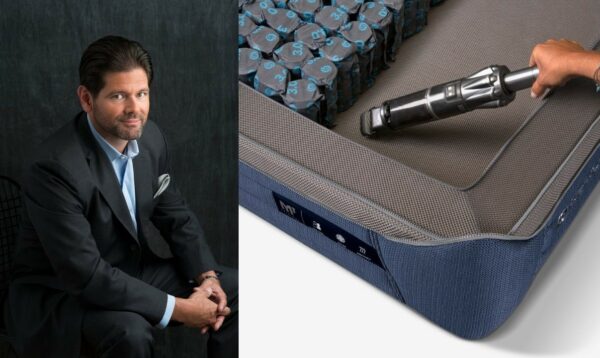
Eugene Alletto / M3 Performance® Mattress
Can you tell us more about how you selected the materials of the M3 Performance Mattress and what impact they have on the sleep experience?
Being an outdoorsman myself, I love experiencing and exploring the world. Regardless of where you stand with climate change or where it relates to pollution, why not be good to mother earth and be as minimalistic as possible? This is the question we asked ourselves when choosing materials for the M3. The M3’s design was meant to be modular and sustainable.
This Performance mattress can be updated as your sleep preferences change over time, allowing you to replace its parts, keep it clean, and extend the life of the mattress. We wanted the M3 to be the only mattress a consumer will ever need because we can eliminate unnecessary landfill waste. The modular aspect of the M3 also allows us to select materials that are able to be upcycled, recycled, or repurposed. The materials used for the M3 have the lowest possible impact on the environment.
You can vacuum the chassis, wash the cover and replace the parts so the entire mattress doesn’t have to go into a landfill.
The personalization available in your design is remarkable, how does the mattress allow for independent firmness adjustment on each side?
The M3’s build is made of multiple components, and one of the key components to making the M3 unique is the Independent Suspension Units. The Independent Suspension units are interchangeable support layers that allow you to choose the firmness for each side of the bed. Made with hundreds of individually wrapped coils, each unit works independently to provide responsive support that caters to your preferences, so you never have to compromise on comfort.
If your comfort preference changes over time, you can simply remove the Independent Suspension unit and swap it for a new one by unzipping the top cover.
Which main issues were you trying to address when developing this project?
One of BEDGEAR’s most important issues we were trying to address when developing the M3 was personalization. We wanted to be kind to mother earth and remain a proudly sustainable company without having our customers compromise their comfort.
Every person has different shoes, jacket, shirt, and pant sizes because it’s what personally fits them best. Yet, the bedding industry gives everyone little to no options to choose which mattress or pillow fits them best. People are forced to choose between one type of body or one type of size when looking for a mattress.
You shouldn’t have to compromise your comfort when it comes to sleep. This is why BEDGEAR is so adamant about providing the best-personalized fit for every consumer’s needs.
How did you approach the challenge of creating a mattress that would meet the needs of both individual sleepers and couples who may have different sleep preferences?
People have been forced into this “one-size-fits-all” mentality in the mattress industry when it doesn’t have to be that way.
The M3 has various firmness options. A sleeper can choose to have the softest of coils or the firmest, so whether you’re alone or in a couple, your mattress will always conform to you no matter your body type and preference throughout life. Additionally, if you and your partner share the same preferences, the M3 can accommodate the same firmness on both sides as well.
What does winning the SIT Award mean to you in terms of validation and recognition of your work?
I’ve been in the furniture business for almost 30 years, and I’ve seen the SIT award on many pieces of furniture for its design, and creativity. It’s always been the pinnacle of many designers to receive this award. It is so important for not only me, but the BEDGEAR team, to have this validation and recognition. It is truly significant, and we are so proud to be able to have a mattress built that would be considered and given such a special award as this one. It’s great to see SIT recognize that important designs can be minimalistic yet good for mother earth. So, we are celebrating today as we gracefully accept this wonderful award.
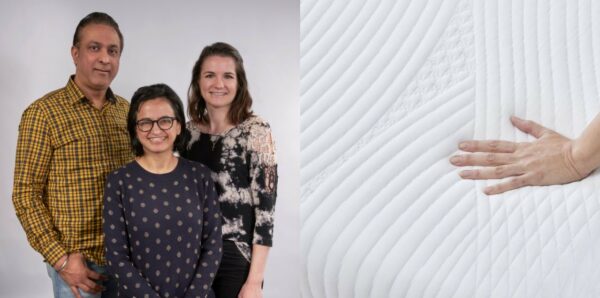
Team from left to right: Gurleen Chhatwal, Ashima Bhasin, Kaitlin Procida / M3 Performance® Mattress
What kind of feedback have you received on the design?
We’ve had great accolades from couples who are saying they just can’t believe a mattress like the M3 wasn’t put on the market sooner. It seems so obvious to everyone that personalization is key.
We’ve had complaints from people who are sleeping too hot or too cold before they discovered BEDGEAR. This is because the foam other bedding brands use are derived from petroleum, which is an insulator that keeps you hot. They also use toxic chemicals that are meant to keep you “cold”. In reality, these chemicals that are supposedly beneficial to the sleeper, are actually dangerous to consumers and their environment. The M3 set the precedent for all bedding companies as it is the first time that a bed feels cool with safe, breathable materials that doesn’t absorb all your body heat.
Couples can now cuddle in the middle without getting hot but also roll over to their side of the bed to get the perfect night’s sleep without temperature issues when it’s time to go to bed. It’s been great.
Are you currently working on something new that you can tell us about?
We are taking our M3 and making it even smarter. We will be delivering by the end of this year the Ambient package. The Ambient package will give you complete control over your sleep, and your microclimate. This will be done through an app and through your smart home. This will be the first bed that has dynamic heating and cooling throughout the night. More to come!
What do you hope to work on in the future and which issues are on your “to-solve” list?
BEDGEAR is positioned to become a health and tech company now that we’re starting to get good results from people sleeping better with our products. Our new Ambient will be one of our many new smart products. BEDGEAR’s goal is to solve more health issues by gathering and collecting data in a unique way that no one else has done before so that we can improve our health and wellness through sleep.
Meet Tony Wu, the winner of the SIT Furniture Design Awards 2023 Emerging Interior Designer of the Year title. As a student at the Savannah College of Art and Design, Tony has captured attention with his innovative approach to retail design. In a world of impersonal shopping experiences, Tony’s vision breathes life into retail spaces, infusing them with emotion, storytelling, and cultural perspectives. His award-winning design, Soul Cave – Patagonia, draws inspiration from nature’s grandeur, offering a glimpse into a retail future that is both captivating and soulful.
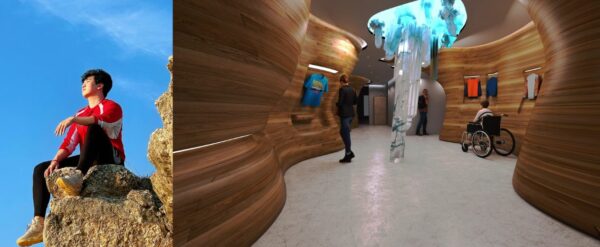
Could you tell us a bit about yourself and your professional journey? How did design come to have such an important role in your life?
My name is Tony Wu, and I’m currently working as a designer at Gensler Houston. As a professional, I am eager to learn new things every day. Variety feeds my passion as I encounter the ups and downs of everyday projects. Design is my focus, and passion fuels my desire to create.
Is there a philosophy or a special process that influences how you approach design? Would you say that you apply it to your life as well?
My philosophy is based on the belief that architecture or interior design can promote social interaction. It is a friend, a mentor, or even family to us. Every design opportunity brings space alive and promotes healthy communities, whether in home life, education, or business settings.
Could you tell us about the vision for the Soul Cave? How did it come to be?
I’ve noticed that many YouTubers start their own brand, and it becomes popular for a while. However, after the trend fades, people tend to forget about it. I feel like this is a common problem nowadays, where customers don’t care about what’s behind the brand. I think this is very detrimental to the business. If the design can tell the story behind the brand, it would be beneficial for both the customer and the brand. Our project seems to take inspiration from Arizona’s Grand Canyon, how did you incorporate its characteristics in the design?
What does winning the SIT Award mean to you in terms of validation and recognition of your work in the design industry?
Receiving recognition from SIT is unbelievable. I am honored and truly grateful. I feel called to achieve more creative designs in my future work.
Are you currently working on something new that you can tell us about?
I am not free to talk about my project at Gensler. I am trying very hard to know all the codes, as well as the details, to foster my knowledge about architecture and interior design. I want to be a competent and creative designer who can plan, model, render, and, most of all, learn how everything works toward achieving the final product.
How do you approach sustainability in your designs and what role do you think it has or should have in the future of the industry?
Using green materials is the first step towards achieving sustainability. Resources are running short, so having a design that can help the world save resources is a huge step.
Zurich, Switzerland – From cutting-edge designs to bold innovations, the SIT Furniture Design Award has once again showcased the most exceptional talent in furniture and interior design. With over 400 entries from professional and emerging designers from around the world, the competition was fierce, but only a few stood out as the best of the best.
The SIT Furniture Design Award has become a platform for recognizing top-notch talent in the world of furniture and interior design. Check out the winners of the competition’s third edition, and discover how they achieved the perfect balance between form and function.
The grand winners of the SIT Furniture Design Award 2023 are:
Interior Design of the Year: Muskoka Cottage by Studio Paolo Ferrari
Furniture Design of the Year: Typology Ribbon Bench by Landscape Forms
Innovation of the Year: M3 Performance® Mattress by BEDGEAR®
Emerging Furniture Designer of the Year: Daejo by Tom Man
Emerging Interior Designer of the Year: Soul Cave – Patagonia by Tony Wu
These winners were selected through a multi-round voting process by a panel of distinguished judges from around the world, including Lilian González-González, Industrial Design Academic Coordinator at the Anáhuac University of México and Board Member at World Design Organization, Barend Slabbert, Programme Leader Interior Design at the University of Derby, Nataly Bolshakova, Founder and Lead Designer at Bolshakova Interiors, Radhika Seth, Vice President of Sales of Yanko Design, Jakob Kjaer Nielsen, Global Design Director at Global Design Director and more industry leaders. The winning designs truly exemplify the importance of recognizing outstanding talent in furniture and interior design, showcasing how creativity, innovation, and sustainability can work hand in hand to produce outstanding pieces that elevate the very concept of design.
Astrid Hebert, the founder of SIT Furniture Design Award, is delighted by this year’s winners and highlighted the importance of recognizing both emerging and established designers. “Design is an ever-evolving field, and we must give space to new talents and established designers alike to showcase their work and push the boundaries of creativity.” adding that “Our mission at the SIT Furniture Design Award is to inspire innovation in furniture and interior design, and this year’s winners have done just that. We congratulate them on their impressive creations and look forward to seeing what they will accomplish in the future.”
Other winners in Furniture Design include Karim Rashid for the “Ego Chair”, Jan Flook Lighting with the “Cloud 9”, the German company Maytoni with the “Reflex” winner in Pendant Lighting, García Requejo with the “Arum Lily Collection”, Flexispot for the “V6 Intelligence Fitness Chair” and Studioforma for the lounge chair called “CLODETTE”. In Interior Design categories, the recipients include TABOORET teams design of the “Ukrainian L’Oreal Academy”, Wow Atelier for the “X-Mission” office, Twins Studio winning with the “Tuya Mykonos” in Greece, Johannes Torpe Studios Denmark Aps for the restaurant “Levi” and the Japanese Interior design firm Kamitopen with “Goodman Amenity Space”. Each winner in their respective category reflects the perfect combination of form, function, and aesthetic appeal that sets them apart from the rest.
All the winners can be viewed in the winner’s gallery on the SIT Furniture Design Award website (sitaward.com).
Photo: From left to right ED407 Lido Sofa by Studio Paolo Ferrari, photo credit: Dion Yu Yan Lin, Punto by Sofia von Hauske, Kaef armchair by Arseniy Brodach
Each year, the SIT Award “Innovation Center” focuses on a different topic, looking at highlighting inventions, closely examining today’s challenges, and finding ways to overcome them.
This year, the innovation center focuses on “Furniture with Innovative Materials”, the process of incorporating or using a material that improves resistance, sustainability, or functionality requires talent. BEDGEAR® is receiving this grand prize with their latest mattress innovation called M3 Performance® Mattress.
The M3 Performance® Mattress is the world’s first dual-sided modular design that allows the sleeper to choose from four highly breathable firmness levels on the right or left so they never have to compromise on comfort.
Congratulations to BEDGEAR®, read all about their new product here.
In response to major social changes, the aftermath of wars, and technological innovations, 20th century design was born. Through the innovative eye of some designers, furniture became more than just a practical form, it became a form of art, and their designs still inspire many today. While it’s difficult to limit ourselves to just five names, let us take a look at the leading furniture designers who not only made bold creations in their time, but also developed iconic styles that defined an era and beyond.
Charles-Édouard Jeanneret, known as Le Corbusier, was a Swiss-French architect, designer, painter, urban planner, writer, and one of the pioneers of what is now regarded as modern architecture. His groundbreaking ideas were sometimes met with criticism, but he also revealed designs that shaped modern architecture. Towards the end of the decade in 1928, he presented the LC4 recliner, believing that furniture should be “extensions of our limbs and adapted to human functions.” Le Corbusier also laid a foundation for the theory of proportion and design that is now part of the basic studies of every architecture student.
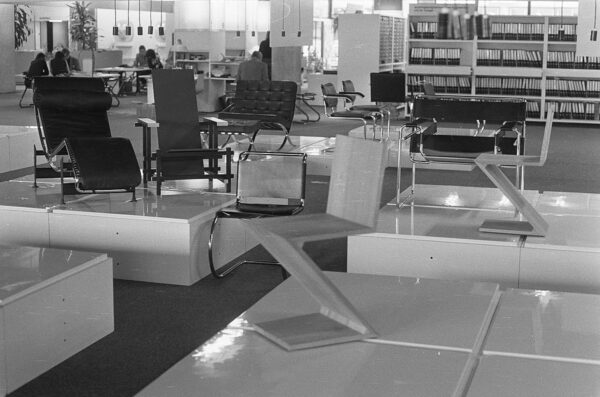
Exhibition of furniture by Le Corbusier, Van der Rohe, Rietveld and others in the Bouwcentrum in Rotterdam
For more than half of the 20th century, Arne Jacobsen’s ideas shaped the Danish design landscape, making Scandinavian design known worldwide and influencing architects and designers around the world. With an eye for detail, he worked on architectural projects that also included elements of interior design, creating visionary minimalistic and functional concepts. Most of his famous furniture designs such as “the Ant”, “the Swan” and “the 7 Series” chairs were originally designed for architectural projects. During his lifetime, Arne Jacobsen received several prestigious awards and was a professor at the Royal Danish Academy for 11 years, influencing an entire generation of Danish architects.
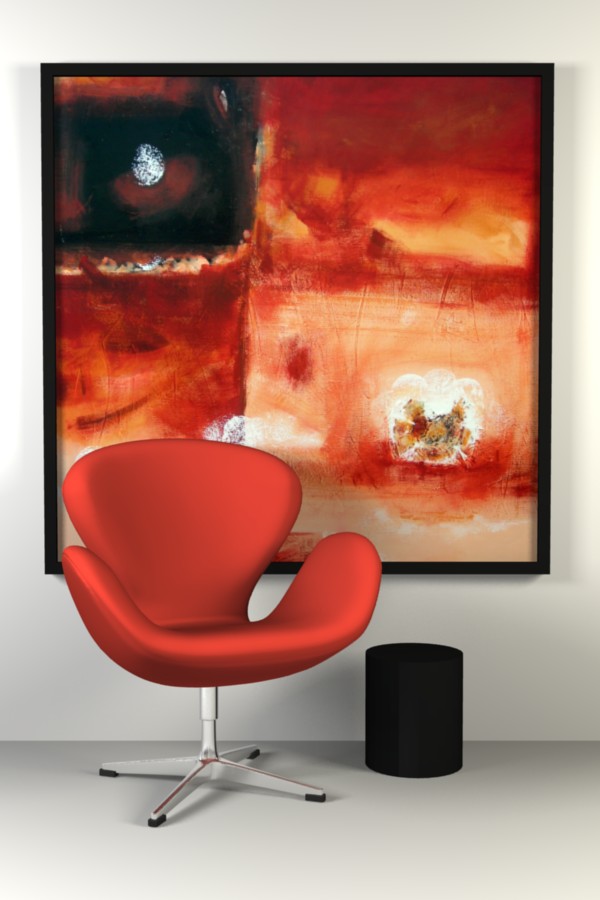
The Swan chair designed by Arne Jacobsen in the Danish modern style in 1958 for the Radisson SAS Royal Hotel in Copenhagen
Charles and Ray Eames were an American husband and wife team of industrial designers who made a significant historical contribution to the development of modern architecture and furniture. They were graphic and textile designers, architects and filmmakers, and best known for their iconic chairs that changed the way we think about modern furniture. Their mission statement was bold and simple: “We want to make the best for the most for the least.” Over the course of their careers, Charles and Ray Eames were honoured with many prestigious design awards, including the British Royal Gold Medal and the American Institute of Architects’ Twenty-five Year Award, and in 1985, the Industrial Designers Society of America awarded the Eames “The Most Influential Designer of the 20th Century.” Charles Eames continued his prolific career until his death in 1978. Ray Eames passed away in 1988, ten years to the day after Charles.

LCW (Lounge Chair Wood) by Charles and Ray Eames, designed 1945-46, molded plywood, teakwood veneer, rubber shock mounts
Charlotte Perriand was a French architect and designer whose goal was to create functional living spaces, believing that better design would help create a better society. Her groundbreaking designs shaped the 20th century and her modern ideas are reflected in the way we live today, from the use of materials to her belief that good design is for everyone. Charlotte Perriand was born in Paris in 1903 and studied at the Ecole de l’Union Centrale des Arts Décoratifs. In 1927, Le Corbusier rejected her application for a position in his studio, writing, ‘We don’t embroider cushions here.” Perriand didn’t give up; she gained the attention of Le Corbusier’s partner Pierre Jeanneret, who persuaded him to reconsider his decision. She was hired, and her collaboration with Le Corbusier resulted in some of the era’s most iconic designs, including the LC4 chaise longue. In a career spanning three-quarters of a century, she has designed buildings, furniture, interiors and decorative objects, completing projects in Brazil, Congo, England, France, Japan, French New Guinea, Switzerland and Vietnam.
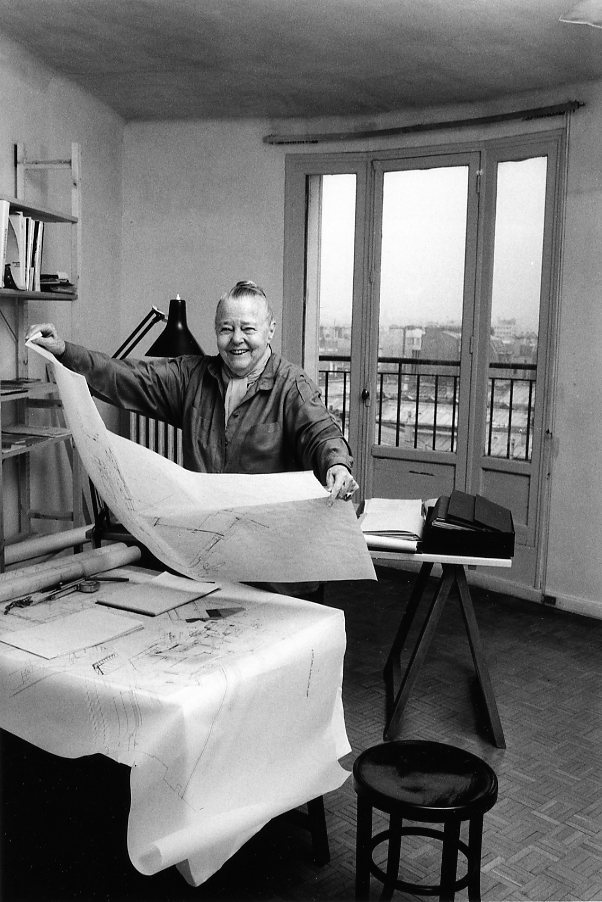
Charlotte Perien, photo by Robert Doisneau, January 1991
Marcel Lajos Breuer was a Hungarian-born modernist architect and furniture designer. At the Bauhaus, he designed the Wassily Chair and the Cesca Chair, considered by the New York Times to be some of the most important chairs of the 20th century. Breuer often collaborated with other designers and developed a thriving global practice that earned him a reputation as one of the most important modernist architects. During his time at the Bauhaus, he revolutionized the modern vocabulary with his tubular steel furniture. His early designs – inspired by bicycle construction and made with the techniques of local plumbers – are among the most influential and important of the modern movement.

Isokon reclining chair, designed by Marcel Breuer, Isokon Furniture Company, London, 1935, bent laminated wood and plywood – Museum für Angewandte Kunst Köln – Cologne, Germany
As interest in mid-century design has grown, several of the designs have been reissued – and the work of the talented designers mentioned above is beginning to receive more attention than ever before.
We talked to the SIT Furniture Design Award ™️ jury member Meghan Preiss, the youngest board member of the World Design Organization (WDO) in their 60-year history. Meghan is also a Manager of Customer Experience Design Integration at Delta Air Lines.
How did you realize that you wanted to work in the design field?
Growing up I was always creative, I danced competitively for 17 years and really loved photography. I originally went to school for photography, but when I learned there was a field that allowed me to be creative and build objects and experiences that can improve people’s lives I was hooked.
You graduated from the prestigious “Savannah College of Art and Design”, which course was your favorite one and why?
My favorite course was Biomimicry, taught by Professor Regina Roland during my study abroad in Lacoste, France. I love being in nature and learning how to observe and question nature in a new way that completely changed and expanded my mindset. This is where I learn how to solve complex problems by observing and being curious about how similar problems are solved every day. It enabled me to see that not everything is exactly how it seems.
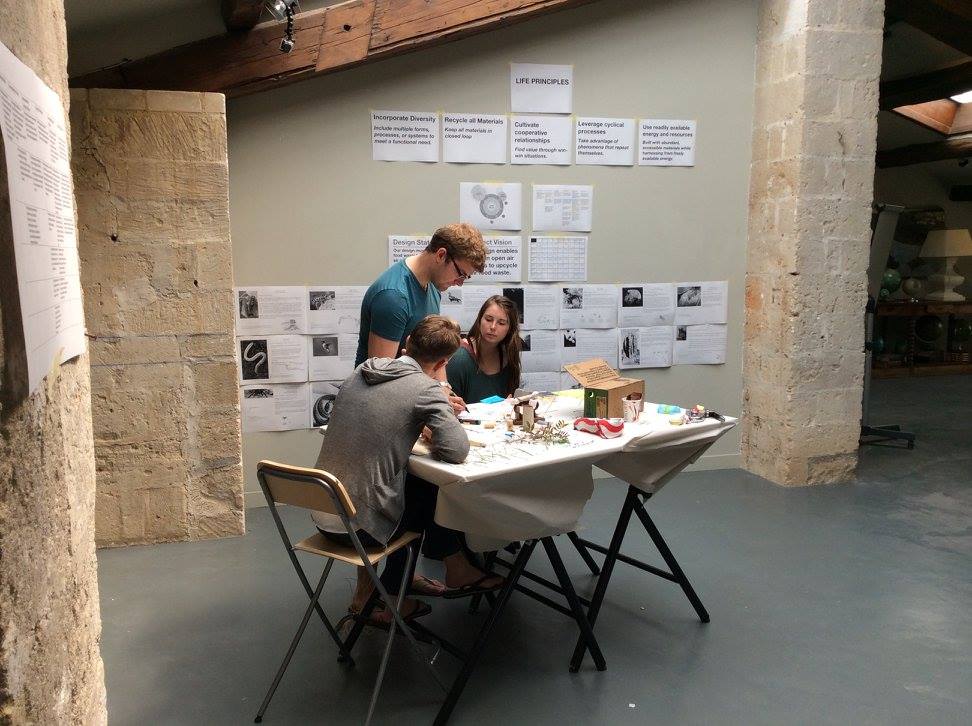
You have previously worked as a Lead Business and Service Designer at IBM iX, can you share more about it?
Yes, I worked in the consulting side of IBM. This enabled me to stretch into any industry. It’s a vague answer, my day-to-day expanded from supporting clients with leading design teams to design thinking training, developing new business opportunities or understanding how to streamline to create more value to creating experiences.
And can you tell us more about your current role as a Manager of Customer Experience Design Integration at Delta Air Lines?
Yes, working at Delta Air Lines is incredible. I work on what I call the chief of staff team and my role is to upskill the entire customer experience design organization in design processes and approaches. This includes bringing design into our strategy and goals discussions as well as transitioning all of our initiatives to a human centered and holistic approach. A challenge for sure, but it motivates me everyday when I start to see little changes like a project using a how might we statement, or someone asking in a meeting how does this impact the human behind the customer.
When did you start being involved with the World Design Organization?
I started being involved with the World Design Organization in 2017 when the Industrial Designers Society of America invited me to attend WDO’s General Assembly in Turin Italy. It was there I realized the impact design can have in society and politics, and let’s just say I was hooked!

Before joining the WDO’s Board Member (btw- congratulations!), you were the United States female representative in WDO’s Young Designers Circle. Can you share more about your role and the diverse initiatives you have supported?
Ah, Thank you! Before becoming a board member, I was elected to be one of the US representatives for the inaugural Young Designer’s Circle. This is a group of 20 selected designers under the age of 40 who work on special initiatives with WDO’s members that bring the design to the United Nations Sustainable Development Goals. My group was very passionate about education, equality, and defining a legacy for young designers within WDO. We worked on projects with Soundwaters, teaching k-12 students creative problem solving to upcycle the plastic bottle caps their school had collected, along with initiatives within Open Afrika, Tunisia Design Week and more. And now as a board member, I get to lead this program and create opportunities for the next generation of design leaders.
What do you think are the biggest challenges and opportunities in your career now?
Great question, the biggest challenge is that I am so curious about everything so I tend to expand my horizons and options, and often, companies and teams want someone who can focus and be an expert. Being a young leader who has an extensive skillset and expertise is not as popular as it sounds. But, I also believe that this is my biggest opportunity because I am curious and dabble in so many things, it has led me to some really incredible projects and initiatives including working on an innovation lab with Ford to designing LEGO’s new paper pre-pack bag and more.
What are you working on at the moment? Do you have any upcoming projects or collaborations that you’re able to tell us about?
At the moment, I am working on my current dream project. A global conversation series where I have the opportunity to empower voices as young as 6 years old to share their dreams of the world. It is a program I am starting with the World Design Organization titled Not There Yet. The title is a play on the typical conversation where a kid is in the back seat asking their guardians if they are there yet, and are constantly being told no. This conversation series is providing the space for the next generation to tell the “adults” no, we are not there yet when it comes to solving global sustainability problems. I find that Gen Z and Gen Alpha are incredibly passionate about the state of the world. I want to empower the next Greta Thunberg or Malala of design to feel their voice is being heard.

Last, do you have any passions aside from design?
Yes, I really love camping, hiking, and pretty much anything that gets me outside and although I didn’t pursue photography in university, I still love to play with film and digital photography when I can. Also, I would say I’m most passionate about giving back. I had and have really amazing mentors who opened doors and my mind to so many things and I want to continue to give back to the next generation through mentoring and speaking at universities.
We talked to the SIT Furniture Design Award ™️ jury member Lilian González-González , Industrial Design Academic Coordinator at Anahuac University of México Board and Member of the World Design Organization.
You are currently the Industrial Design Academic Coordinator at Anahuac University and have been a professor at several Universities and cities around Mexico. What do you find the most fulfilling about working in universities?
Definitely the research and experimentation-creation. In universities, we have the capability to have time to think, reflect, research, and time to make more attempts. This is a “big power because” students and academics can experiment and develop innovation if they have the correct stakeholders and alliances.
When did you join the World Design Organization?
Anahuac University has been a member for 20 years, and I started being in charge of the membership and following the WDO events five years ago. It has been a very enriching experience on an academic and personal level.
Congratulations on your new position as a board member. Can you share with us more about your role and responsibilities?
We are in charge of the strategies. We reflect on the current condition of design and its power to improve current situations around the world. Mostly, how can we, as a design community, advocate and promote design for the good of all and to improve the quality of life.
What do you think are the biggest challenges and opportunities in your industry now?
I grew up in an industrial city in Mexico that used to be a craftsman town for shoe manufacturing. I learned about the industry since I was a child, in my father’s factory, and I had the opportunity to see the industry’s transformation. I lived through the devaluations of the Mexican peso, the Free Trade Agreement, and how this directly affected the industry and the quality of life of the people PLUS its environmental impact. Then I understood that nothing in this country was forever, neither the resources, nor the companies, nor the things, nor the people, etc. We live in an unstable world and we must learn to deal with it.
Our culture is used to be reinvented very often and all around us. In my country, and as with other developed countries or marginalized areas, we used to live in a “sustainable way” (why I am saying this? Because it is the popular word around this issue). We, as Mexicans, used to reuse everything, to maximize resources, to have less waste and fewer expenses, but since the ruthless capitalism and globalization, we started to learn the bad practices to be stronger, to support the industry’s cannibalism. But, I have the idea that industry can unlearn and return to the good practices like how the natives made historically or how they still keep their good practices even in this aggressive world.
Now it seems that again we have to learn from the developed countries as colonizers with their methodologies, like cradle to cradle, circular economy, etc., which have very nice intentions for a change in most cases, but most of the knowledge we already had, but we just wasted and underestimated it. It is not a romantic point of view to go back to the past; it is just to remember that we are wasting time searching and searching for new methodologies, certifications, and bureaucracy that could legitimate what we are saying or thinking to make a correct way. We don’t have so much time. We just have to look around.
Finally, I believe that design has to learn from the minorities, from underdeveloped countries, and from marginalized people, to learn about resilience and how to survive every day with almost any resource. A strategy must be developed together with developed and underdeveloped countries, with large and small industries, which means diversity, a hot topic as well.
What are you working on at the moment? Do you have any upcoming projects or collaborations that can tell us about?
I am working on new research lines, and I would like this to be part of my postdoc. Currently, I am studying for a one-year certification in disability at a critical studies institute www.17edu.org. So the lines of research that I am applying in the academy with the design students are related to healthcare, peace, disability, illness, migration, waste…
On the furniture topic, I am immersed in this business related to recliners and design engineering. Currently, in the company, we are working on a project of furniture for hemodialysis, and here I can show the project for public hospitals that have many furniture needs, which have increased in the pandemic.
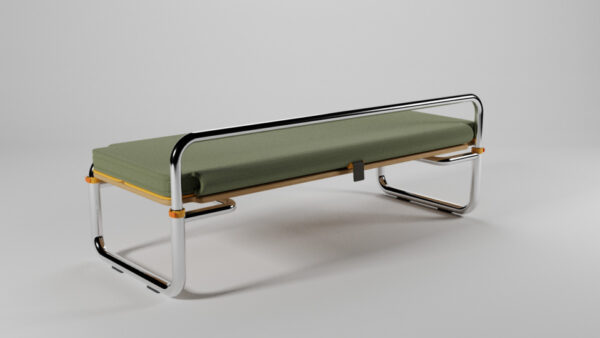
“Hospital bench and bed”
Directed by: Nub-design
Collaboration: Design faculty, Universidad Anahuac Mexico.
Design by: Carla Cogordan, Diego Castillo, Alejandro De La Cruz, Sergio Vivia.
Teacher: Carsten Lemme
Which advice do you give to your students, starting their career in Design?
Observe and learn about minorities, about disability, about little things, about details, and learn about it, keep it in main and apply it in your life and creativity.